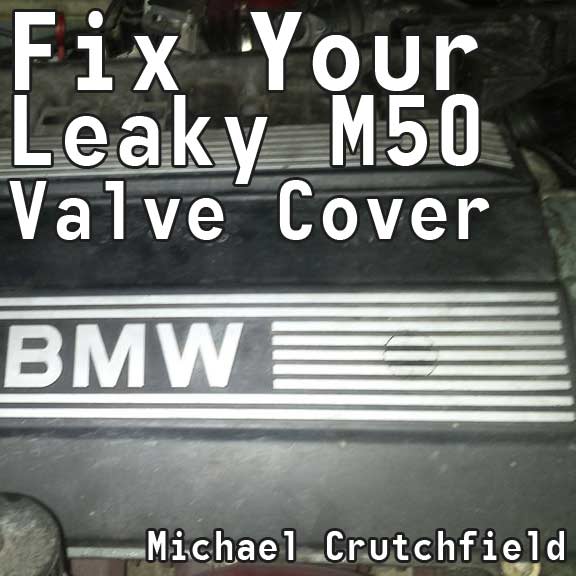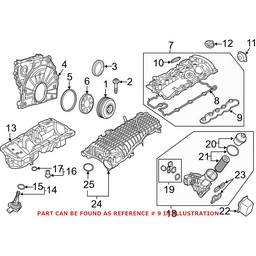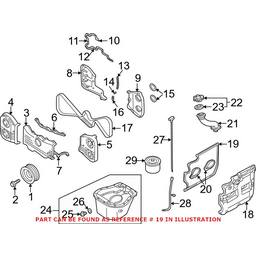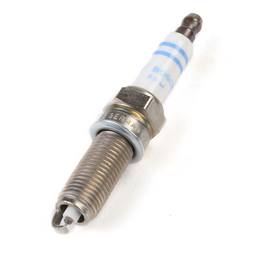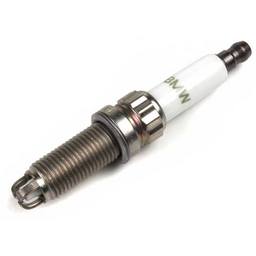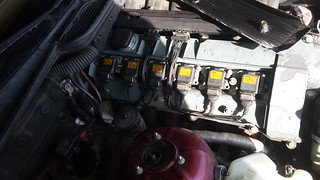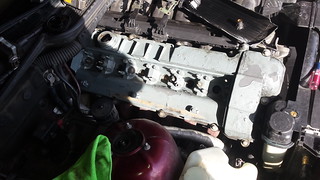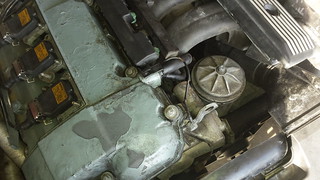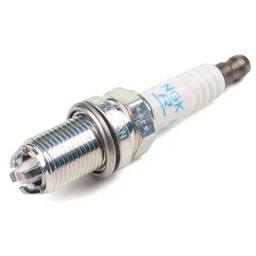Valve cover gasket failure isn’t the end of the world. It’d definitely not as bad as head gasket failure. However, once it goes, you need to replace it. Speaking of which, we’ll go over the E36 valve cover gasket replacement process for the M50 engine in this guide.
On top of showing you how to DIY this job, what tools and parts you’ll need, we’ll also talk about how to diagnose a bad valve cover gasket on just about any engine. That being said, let’s start with the basics.
What is a Valve Cover and What Does it Do?
Engines are compartmentalized. It’s just easier that way. You have the pistons, cylinders, and the crankshaft down at the bottom of the engine, inside the block. Up top, we have the cams, valves, and all that other good stuff. These two parts of the engine are kept separate.
The latter of the two groups of components sit between the valve cover and the head. The valve cover is there to keep this area of the engine sealed up and protected. Once the gasket on the valve cover goes, you’ll start noticing several issues.
Fortunately for everyone, replacing a valve cover gasket is an easy job on most engines, including the M50 in a BMW E36. Considering how old these cars are by now and how many miles an average specimen has on the clock, there’s a solid chance you might need to change your valve cover gasket sooner rather than later.
Since this is eEuroparts.com, where we’re all about that DIY life, we figured we would run you through the process of replacing this part in your car. Before we get to that, let’s find out the symptoms of a failed valve cover gasket.
Symptoms of a Bad Valve Cover Gasket
As we’ve said at the beginning of the article, a bad valve cover gasket won’t cause the engine’s immediate catastrophic failure. The effects are nowhere near as dramatic. However, if you leave a bad gasket long enough, it will cause a few issues.
So how can you tell if your gasket is blown?
There are several things to look for that will indicate valve cover gasket failure. Let’s start with the most obvious one.
Obvious Oil Leak
If the gasket deteriorates badly enough, you’ll know because the entire valve cover will be drenched in engine oil. All the internals that are found under the cover are constantly bathed in oil circulating within the engine. Once the gasket fails, that oil eventually starts finding its way out.
If the leak is localized, you can bandaid the issue by applying some sort of sealant, usually silicone. However, even if you decide to use this temporary solution, you should still think about replacing it sooner rather than later.
Oil Leak Inside the Spark Plug Ports
On the M50 engine, just like on most gasoline engines, the spark plugs and coils run through the valve cover. When you remove the valve cover, you’ll find a separate set of gaskets that seal up the coils from the valve area.
Usually, when the main gasket fails, these smaller gaskets fail as well. Once that happens, you’ll find oil in your spark plugs. This can cause all kinds of rough engine idle problems, misfires, and other similar issues. If you notice that your oil level is dropping, but you can’t find the leak, check the plugs. If they’re drenched in engine oil, you’ll know what’s up.
The Smell of Burning Oil
With the M50, once the gasket springs a leak, there’s a solid chance you’ll find oil dripping on the exhaust manifold. Seeing how these tend to get extremely hot, you might start noticing that your car smells of burning oil.
Do yourself a favor and fix the leak as soon as you notice the burning smell. Leaving the oil to accumulate on the manifold can lead to all kinds of trouble you definitely don’t want to deal with.
E36 Valve Cover Gasket Replacement – Parts and Tools
Now that we know a little about the valve cover, the gasket, and issues a failed one can cause, let’s get to actually replacing it on a BMW E36 325i. We strongly suggest that you get quality parts.
Speaking of which, here’s the list of what you’ll need for this job:
Parts:
- Valve Cover Gasket Kit (Includes the 2x spark plug socket seals)
- 15 x Valve Cover Nut Seals
- RTV Black Silicone
Tools Needed:
- 3/8″ drive socket wrench
- 3/8″ drive torque wrench (capable of 10 n-m)
- 10 mm socket
- 8 mm socket
- Flathead screwdriver
- 3″ and 6″ 3/8″extension bars (optional but will help you not scrape your knuckles)
- 3/8″ Swivel Joint (Useful for two of the bolts on the passenger side near the back of the engine)
Step 1 – Strip the Covers
The first step in the process is to get rid of the plastic covers on the engine. Make sure to remove both as that makes it easier to simply flip the ignition coil harness over the engine and out of the way. To pop the covers, you will need the flat head screwdriver 10 mm socket. Pop the 4 plastic plugs that cover the bolts, and use the socket to remove them.
Step 2 – Unhook the Coils and Move the Harness
Once the covers are off, start removing the ignition coils. Coils are held in place by two 10 mm bolts on each corner. Before you start stripping them out, make sure to undo the wiring harness. When you remove all the coils, flip the harness over the intake manifold and weigh them down with something.
Step 3 – Remove the Valve Cover Bolts
With everything out of the way, we can start removing the valve cover bolts. There are 11 of them on the M50 engine, spread around the perimeter of the cover. One of these is hard to reach as it’s sitting under the cowl. Four are running from one end of the spark plugs to the other. Also, the two bolts in the middle are different.
One of these might also be a grounding point, so expect to find some wiring. As you start removing these bolts, you’ll notice that there are rubber grommets on each one. If you’ve ordered new ones, go ahead and ditch the old ones. Otherwise, don’t lose them. The only thing left to do is remove the breather hose from the cover, and you’re free to lift it.
Step 4 – Remove the Old Gasket and Clean the Residue
With the cover off, remove the old gasket as well as the individual ignition coil gaskets. Use a razor blade to scrape any residue of the old gasket from the mating surfaces. Once you’re satisfied, wipe all the surfaces down to remove any oil that might have got there. This is where the RTV comes in handy. Make sure to do this for the ignition coil channels as well.
Step 5 – Install the New Gaskets
The next step is to install the new gaskets. Before you do that, apply a bit of RTV on the mating surfaces at the back of the engine. Also, add some near the VANOS unit. Next, get your gasket and install it in place.
Then take your spark plug gaskets and install them as well. These only fit one way, so you can’t mess up the orientation. Studs are sticking up from the engine that will prevent any misalignment. With the gaskets installed, carefully return the cover back onto the engine.
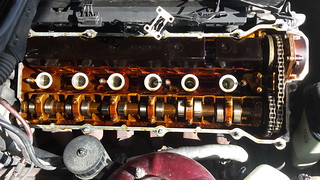
Step 6 – Install New Bolt Grommets
With the cover sitting securely on the engine, apply the new rubber grommets to the bolts. You’ll want to hand tighten the bolts in place. Then, take a torque wrench and start tightening the bolts down to 10 n-m.
Now, the one in the back of the engine, on the driver’s side, will be impossible to torque due to its position. You’ll have to improvise on this one. Just make sure not to torque it down too hard as it’s extremely easy to go past 10 n-m without a torque wrench.
Step 7 – Reinstall the Coils
All you’re left to do now is to reinstall the spark plugs, ignition coils, and the wiring harness. Once you’re done doing that, pop the plastic covers back on, and you should be good to go.
One last thing would be to leave the car sitting overnight. We recommend a 24-hour interval to leave the RTV enough time to cure. In the morning, start the engine and look for leaks. If everything’s dry, you’re in the clear.
Where to Find Quality Valve Cover Gaskets for the E36 and Other BMWs?
To find a valve cover gasket set, simply head over to our web store and input your car’s information into our search tool. We cover all kinds of European cars, including BMW, Audi, VW, Porsche, etc. You’ll find quality gaskets made by leading OEM manufacturers in our catalog.
In case you have any further questions, feel free to get in touch with us. We can be reached via email or by phone. Our customer support reps are standing by to answer any questions you might have.

